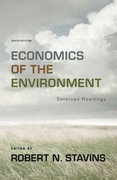Kindly answer the questions
4 A statistician wishes to obtain a Bayesian estimate of the mean of an exponential distribution with lyle density function f(x)=-e-*// . He is proposing to use a prior distribution with PDF: The mean of this distribution is a - 1 (i) Write down the likelihood function for /, based on observations x1..... X, from an exponential distribution. [1] (ii) Determine the form of the posterior PDF for #, and hence show that an expression for the Bayesian estimate for / under squared error loss is: [3] nta-1 (iii) Show that the Bayesian estimate for / can be written in the form of a credibility estimate, giving a formula for the credibility factor. [3] (iv) The statistician decides to use a prior distribution of this form with parameters 0=40 and a =1.5. You are given the following summary statistics from the sample data: n=100, _ x; =9,826, and Ex; =1,200,000 Calculate the Bayesian estimate of / and the value of the credibility factor. [2] (v) Comment on the results obtained in part (iv). [1] [Total 10] .5 Let O denote the proportion of insurance policies in a certain portfolio on which a claim is made. Lyle Prior beliefs about O are described by a beta distribution with parameters a and B . Underwriters are able to estimate the mean / and variance o of 0. (i) Express o and / in terms of / and o. [3] A random sample of n policies is taken and it is observed that claims had arisen on d of them. (ii) (a) Determine the posterior distribution of 0. (b) Show that the mean of the posterior distribution can be written in the form of a credibility estimate. [5] (iii) Show that the credibility factor increases as o increases. [3] (iv) Comment on the result in part (iii). [1] [Total 12].1 Let Ct], :12 be the modes of decrement in a doubledecrement table. Suppose that or] is uniformly distributed over the year of age from .r to I + 1 in its associated single decrement table, and pi?\" = c for II} E t E 1. Find formulae for {an}? and {an}? in terms of .331 and .333. .2 For a certain group of married women, for whom remarriage is not permitted, the dependent q type rate of widowhood at each integer age .1: from TI} to T2 inclusive is twice the corresponding dependent qtype rate of mortality. The independent rates of mortality of wives follow e{55] ultimate {females}. {i} Using a radix of IWHUID and assuming a uniform distribution of each mode of decrement in its associated singledecrement table, construct a doubledecrement table for married women from age 713' to age 72 inclusive, giving also the value of (HUM, the number of wives at age 73. {ii} Find the probabilities that a wife now aged TC! will {a} be alive and married at age 73; and {b} be widowed within 3 years. .3 In a certain country, widowed and divorced men are subject to the following independent qtype rates of decrement: mortality: English Life "Table No. 12 Males remarriage: rates depend on the age at, and the duration since, the end of former marriage; the following table is an extract from these rates: exact age at end duration duration of former 1 marriage year year 513' ' 13.1325 51 H.045 13.1323 52 43.4342 Calculate the probability that a man aged exactly 5i} whose marriage has just ended will remarry within 2 years








